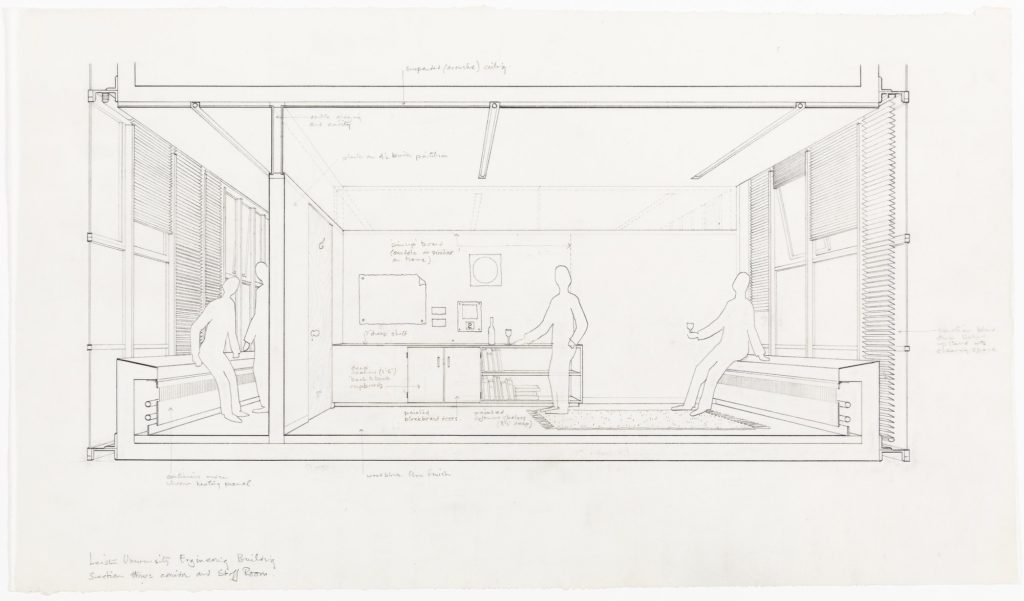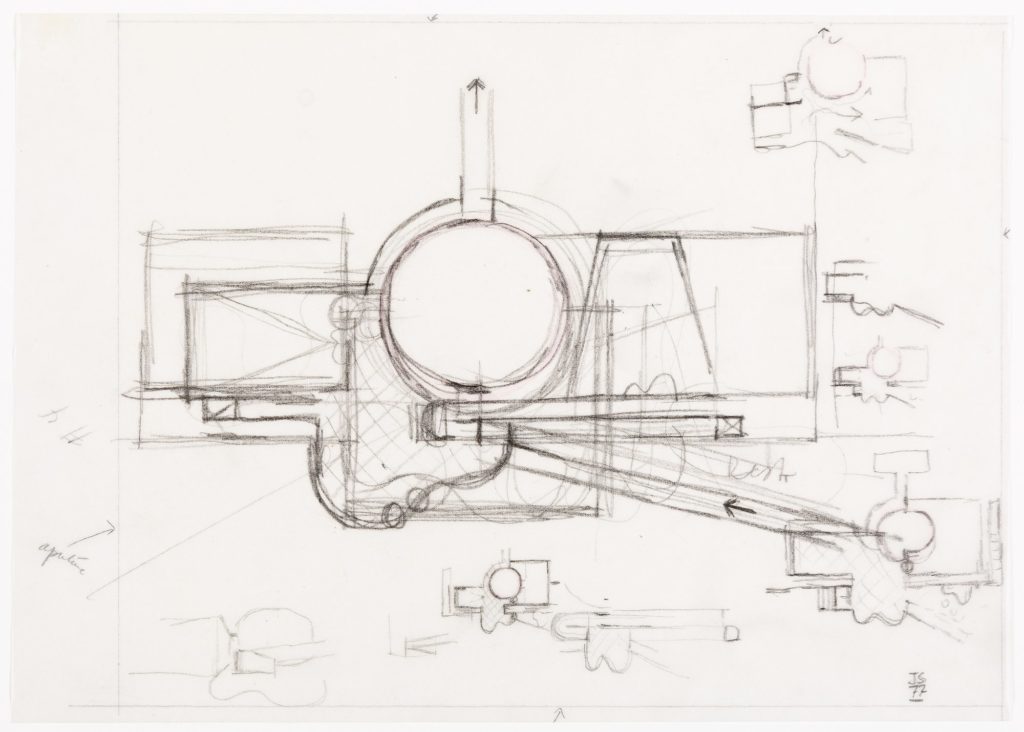Seeing, and Disbelieving

It is easy enough to say that the analysis of any architectural drawing begins with asking what it is for. But trying to answer this innocent question, which applies equally to the purpose for which the drawing was intended and for which we are now looking at it, presents many impediments.
Consider first that the drawing gathers much of its meaning from participation in some sequential process of thought or presentation; even a final version must refer to its antecedents. All the drawings in the world today represent a tiny fraction of those that have once existed, and an individual drawing is itself likely to be a minority survivor within the many sequences by which any particular building came to be imagined, and even built. And by the time anyone besides an architect gets around to looking at it, that drawing has long shed any of its utility as a tool for getting something built. Often, neither author nor original audience are available as witnesses.
After this first winnowing, continuing existence is most often – perhaps, at best – quite arbitrary. There are, of course, the practical pressures of time and (storage) space. But what remains is also subject to a relentless writing of legacy – by the architects themselves, their associates and heirs or by historians. This residue is then reviewed by museum and market processes that seek, too optimistically, to identify the iconic with the telling – the architect under pressure to express as a certainty something that is as yet only an idea, and turns out very often to have been a mistake; bold lines and colours, when expressed through unfamiliar graphic conventions, can be camouflage. Even obvious association with works of architecture that are themselves iconic can raise an old question, in the context of any exhibition, about the absence of the buildings themselves.
In contrast, the production of any drawing has often involved imaginative conventions and constraints loosely appropriated by the designer from other fields of the visual arts, offering a correspondingly specious access to an audience from beyond the narrowly architectural. A presentation drawing, intrinsically pictorial, is generally intended just as a way-stage in mechanical reproduction and meant to look as much as possible like the building that it represents. Isolating anything in a frame on a gallery wall compounds the confusion. This is particularly so when the designer of the building and the draughtsperson of the drawing are different people, whose relationship is itself uncertain – a challenge to normative concepts of authorship and originality embedded in museological systems of labelling and cataloguing.

The two drawings here, each a critical project marking the early and late career points of James Stirling, describe in different ways some aspects of the confusion of what it is we are seeing and how we should be seeing it. They are fairly rare, within a drawn oeuvre famous for the participation of many hands, in that here they quite clearly come from Stirling’s own. Each drawing, following a trajectory of its own, became separated from the main body of the architect’s archive – but both fortuitously now rest in the same collection.
The Leicester sheet emerged from the carefully sorted archive of Stirling’s partner, James Gowan, after the latter’s death in 2015 (the folder that housed it was labelled ‘Drawing by JS!’). The drawing has no real precedent, in style or presentation, among the surviving material for their most famous project, the Engineering Building at the University of Leicester, the last they completed together. It serves no obvious practical purpose in the design process – unless to convince an all-male senior faculty that the gentle slope of the radiator casings would make for warm seating while they drank a glass of wine in the Staff Room or schemed privately in the corridor. In a gesture no doubt intended to woo his engineer clients, Stirling contrived that the bottle of Burgundy and glass stand on the horizon line, exactly in the middle of the drawing. The vanishing point itself is, rather squiffily, off-centre to the left – geometry, mise-en-bouteille.
The Staatsgalerie sketch, on the other hand, was not kept with the archive of that project but sent by Stirling to the US to be sold in a commercial exhibition in the mid-1980s, as the project was being completed and entering the public consciousness. It is graphically the loosest and most abstract of Stirling’s Staatsgalerie sketches – and it comes quite early in a long and tightly argued sequence, by which the architect explores the complex circulation of the building’s extension. No others in the series carry a signature or date – both were clearly added later and the emphatically underlined ‘77’ in fact situates the drawing unconvincingly early in the project history. The drawing offers no clues as to either the strongly postmodernist architecture of the project or to Stirling’s response to the steep topography of the site and the existing neoclassical building, for which the project came to be both celebrated and condemned.
Removed in this way from any of its strictly architectural contexts, conceptual or built, a routine study of design process – interesting in itself, and even more fascinating in its original sequence – has been repurposed as a bravura performance, for a New York gallery audience, of the power of the architect’s singular conceptual thinking. A paper-napkin sketch, but in any case ‘for’ something – and for somebody – completely different.
Extracted prologue to Architecture through Drawing, edited by Desley Luscombe, Helen Thomas and Niall Hobhouse, published by Lund Humphries. Order your copy through our webshop or purchase directly from the publisher.
